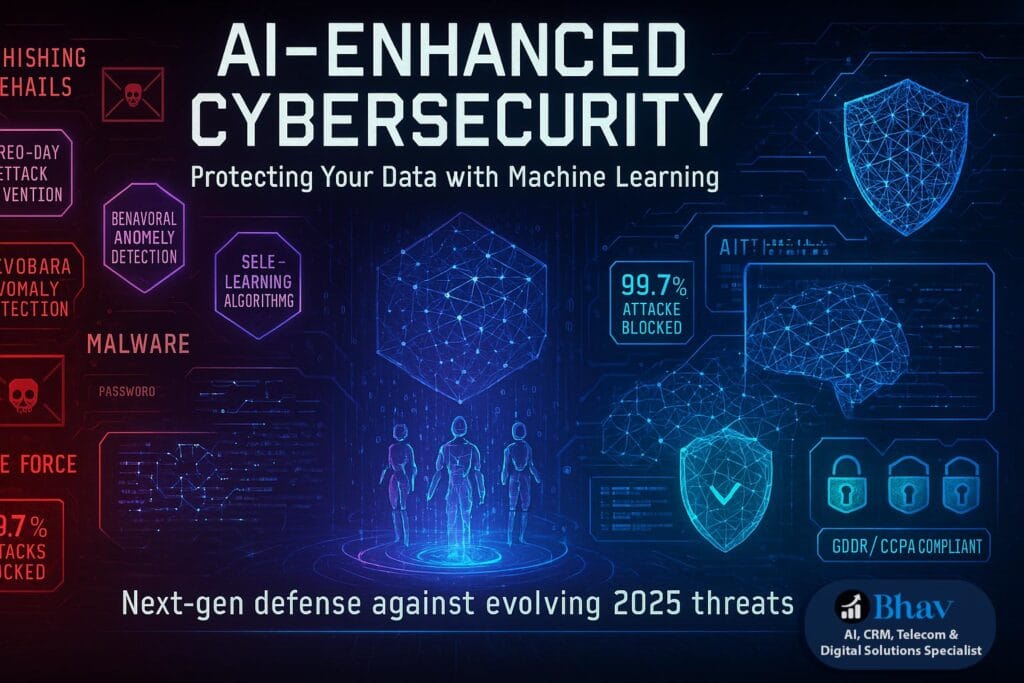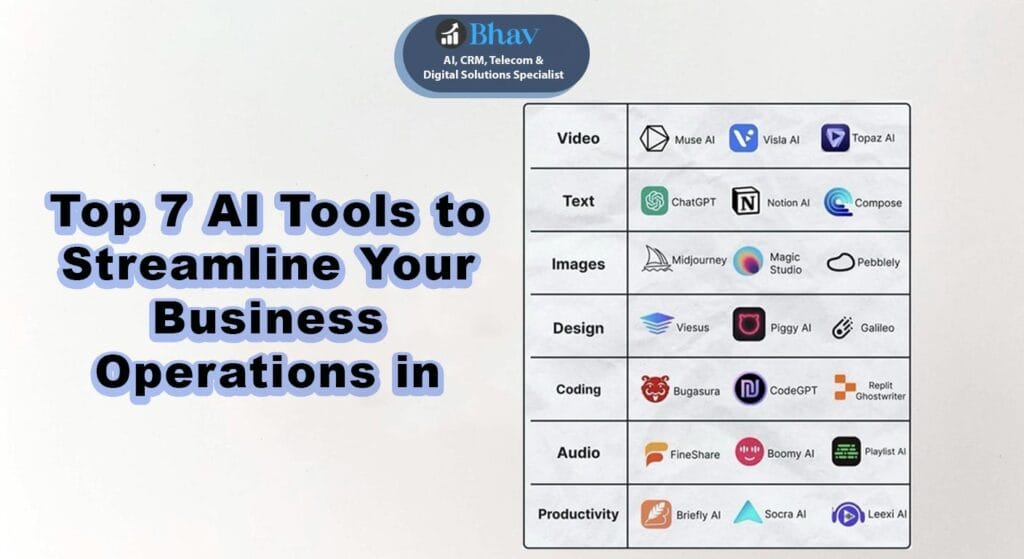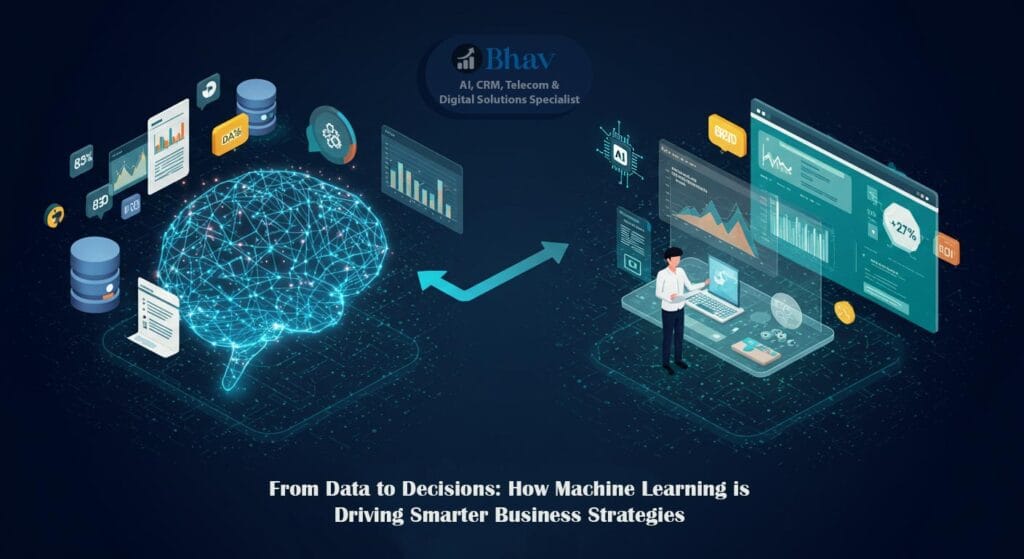
Introduction to AI in Cybersecurity
In recent years, the rapid advancement of technology has significantly altered the landscape of cybersecurity. As organizations increasingly rely on digital platforms, the volume and sophistication of cyber threats have surged. Traditional security measures often fall short in addressing these complex challenges, necessitating the integration of artificial intelligence (AI) and machine learning into modern cybersecurity frameworks. This shift marks a pivotal development in the ongoing battle against cybercrime.
The use of AI in cybersecurity allows for a more proactive approach to threat detection and response. By leveraging machine learning algorithms, cybersecurity systems can analyze vast amounts of data in real time, identifying patterns that may indicate security breaches or vulnerabilities. These advanced technologies enable organizations to not only respond to threats more swiftly but also to anticipate and mitigate potential attacks before they can escalate.
Moreover, the dynamic nature of cyber threats demands that security protocols continuously evolve. Attackers are constantly innovating, employing tactics that challenge traditional security methods. AI-powered solutions can adapt to these changes by learning from new data and evolving strategies to counteract emerging threats. This adaptability is particularly crucial in a landscape where cyber attacks can come from various sources, including sophisticated criminals and even state-sponsored actors.
In summary, the integration of AI and machine learning into cybersecurity is becoming essential for organizations to maintain robust defense mechanisms. As the cyber threat landscape grows ever more complex, the need for advanced, intelligent solutions to protect sensitive data and ensure operational integrity is clearer than ever. This transformative approach not only enhances existing security frameworks but also equips organizations to face the future of cybersecurity challenges head-on.
Understanding Cyber Threats and Vulnerabilities
In the contemporary digital landscape, organizations face an array of cyber threats that compromise their data integrity and safety. Cyber threats can manifest in various forms, and understanding them is crucial for effective defense strategies. Major threats include malware, phishing, and ransomware, each with unique characteristics and impact.
Malware, short for malicious software, is a broad category encompassing viruses, worms, trojans, and spyware designed to disrupt, damage, or gain unauthorized access to systems. Statistics reveal that nearly 60% of organizations experienced a malware attack in the previous year, underscoring the prevalence of this threat. The consequences of malware infiltrations range from financial loss to reputational damage.
Phishing is another significant cyber threat, often executed through deceptive emails or messages designed to trick users into revealing personal information. This social engineering tactic has evolved, with sophisticated phishing schemes capable of bypassing traditional security measures. Recent studies indicate that around 1 in 4 individuals will fall victim to phishing attempts, which emphasizes the necessity for comprehensive user education and rigorous verification protocols to mitigate risks.
Ransomware represents a particularly insidious type of cyber threat, where attackers encrypt an organization’s data and demand payment for its release. The frequency of ransomware attacks has escalated dramatically, with reported incidents increasing by over 150% in the last year alone. Victims not only face potential data loss but also the financial burdens associated with ransom payments and recovery efforts.
Organizations must recognize these cyber threats and vulnerabilities to formulate robust cybersecurity frameworks. The growing sophistication of these threats reveals an urgent need for advanced protective measures, such as machine learning and AI-enhanced cybersecurity solutions, which can significantly enhance threat detection and response capabilities.
How Machine Learning Works in Cybersecurity
Machine learning (ML) has emerged as a transformative technology in the field of cybersecurity, enabling organizations to protect their data more effectively. At its core, machine learning is a subset of artificial intelligence that allows systems to learn from data and improve over time without being explicitly programmed. This adaptive capability enhances the detection and prevention of security threats, making it a valuable tool for cybersecurity professionals.
There are two primary types of machine learning utilized in cybersecurity: supervised and unsupervised learning. Supervised learning involves training algorithms on labeled datasets, wherein the model learns to identify patterns associated with known threats. For instance, an algorithm might be trained on historical data representing both benign and malicious network activities, thereby enabling it to differentiate between the two in real-time. On the other hand, unsupervised learning operates without labeled data. It focuses on identifying anomalies in data patterns, which can represent potential threats or unusual behavior that cannot be classified easily. This approach is beneficial in discovering zero-day vulnerabilities and novel attack vectors.
Algorithms play a crucial role in analyzing vast amounts of data to uncover hidden insights. By employing techniques such as clustering, classification, and regression, machine learning systems can monitor network traffic, user behavior, and system logs to detect potential cybersecurity issues. For example, a machine learning model might flag unusual login attempts from various geographic locations, signaling a possible account compromise. Additionally, real-time threat detection systems utilize these algorithms to provide immediate alerts and responses, dramatically reducing the time it takes to mitigate breaches.
Numerous organizations have successfully integrated machine learning into their cybersecurity strategies. For example, leading tech companies use ML algorithms to continuously refine their threat detection systems, significantly decreasing the vulnerability window. In essence, machine learning serves as a pivotal advancement in the quest to combat cyber threats, enabling systems to adapt, learn, and respond proactively to ever-evolving risks.
Benefits of AI-Enhanced Cybersecurity Solutions
The adoption of AI-enhanced cybersecurity solutions is significantly transforming the landscape of data protection. One of the most notable benefits is enhanced threat detection. These solutions leverage advanced algorithms and machine learning models to analyze vast amounts of data in real-time, identifying patterns and anomalies that may indicate a cyber threat. Traditional methods often struggle to keep pace with the rapidly evolving nature of cyberattacks, but AI systems continuously learn from new data, enabling them to detect previously unknown threats more effectively.
In addition to superior threat detection, AI-enhanced solutions greatly reduce incident response time. When a potential threat is identified, machine learning algorithms can not only notify cybersecurity teams but can also suggest immediate remedial actions based on historical data and predictive analytics. This quick response is crucial in minimizing potential damage, as it allows organizations to address vulnerabilities before they are exploited. In contrast, conventional approaches often rely on manual processes, which can result in delays and increased risks.
Cost-effectiveness is another significant advantage of implementing AI in cybersecurity. While the initial investment in AI technology may be higher than traditional solutions, the long-term savings derived from reduced incidents, fewer data breaches, and lower operational costs make it a more fiscally responsible option. Furthermore, AI systems can automate routine security tasks, allowing cybersecurity personnel to focus on more strategic initiatives. The integration of these solutions also fosters overall operational efficiency, which can lead to additional financial benefits for organizations.
Moreover, the predictive capabilities provided by AI-driven analytics further bolster security measures. By learning from past incidents, these systems enhance future prevention strategies, creating a proactive rather than reactive approach to cybersecurity. This continual improvement is invaluable, ensuring that organizations remain resilient against the ever-changing landscape of cyber threats.
Challenges and Limitations of AI in Cybersecurity
Despite the promising capabilities of artificial intelligence (AI) in enhancing cybersecurity protocols, several challenges and limitations hinder its deployment in real-world scenarios. One of the foremost issues is the prevalence of false positives in threat detection. AI systems are designed to analyze vast amounts of data to identify potential threats, but they sometimes misclassify benign activities as malicious. This can lead to unnecessary alarms, wasting valuable time and resources while detracting from genuine threats. The accuracy of threat detection relies heavily on the quality of data fed into AI models, and as such, continually refining these models is critical for optimizing performance.
Furthermore, the effectiveness of AI in cybersecurity is contingent upon the availability of substantial training data. To detect and respond to evolving cyber threats, AI systems require large datasets that encompass a range of attack scenarios. Insufficient or biased data can impair the learning process, making it difficult for AI algorithms to predict and mitigate sophisticated cyber-attacks. This dependence on quantity and quality of data underlines a broader challenge: organizations must invest in extensive data collection and preparation to ensure their AI systems are capable of effectively countering ever-evolving threats.
Another significant concern lies in the realm of privacy and ethical implications associated with deploying AI technologies. The collection and analysis of sensitive personal data raise questions about users’ consent and the potential for misuse of information. Additionally, biases imbued in AI algorithms can propagate discrimination if unaddressed. Therefore, it is essential to implement robust guidelines and ethical standards to govern the use of AI in cybersecurity. Finally, while AI can augment security measures, human oversight remains crucial. Experts must regularly evaluate AI functions to ensure that they operate within acceptable parameters and to make informed decisions when AI may struggle with ambiguity or unforeseen scenarios.
Future Trends in AI-Driven Cybersecurity
The landscape of cybersecurity is rapidly evolving, particularly with the integration of artificial intelligence (AI) technologies. One significant trend anticipated for the future is the automation of threat responses. As cyber threats grow more sophisticated, the need for immediate, effective responses becomes paramount. AI-driven systems are expected to streamline this process by employing machine learning algorithms that can identify and react to threats in real time. This automation not only enhances response times but also allows cybersecurity professionals to focus on strategy and complex case management rather than routine detection.
Another emerging trend is the advancement of predictive cybersecurity, where AI will play a crucial role in foreseeing potential cyber threats before they materialize. Utilizing vast datasets, machine learning models will analyze patterns and anomalies indicative of evolving threats. This proactive approach enables organizations to bolster their defenses in advance, rather than merely reacting to incidents after they occur. For instance, predictive algorithms can forecast the likelihood of a data breach based on specific indicators, allowing businesses to take necessary precautions.
Additionally, the collaboration between AI and other cutting-edge technologies, such as blockchain and the Internet of Things (IoT), will shape the future of cybersecurity. Blockchain offers decentralized security measures that empower users with data integrity, while IoT devices continue to proliferate, creating new vulnerabilities. By leveraging AI to manage and coordinate defenses across these diverse technologies, organizations can achieve a more robust and comprehensive security posture.
As cyber threats continue to evolve, the adaptability and capabilities of AI in cybersecurity will be crucial. The ongoing advancements in AI-driven solutions are set to enhance security mechanisms substantially, ensuring that organizations can better safeguard their data against an increasingly sophisticated threat landscape.
Best Practices for Implementing AI in Cybersecurity
Integrating artificial intelligence into cybersecurity systems necessitates a strategic approach to enhance data protection effectively. The first step involves assessing risk levels within an organization. This assessment not only helps in identifying potential vulnerabilities but also empowers decision-makers to allocate resources effectively. By understanding the specific threats that the organization faces, tailored AI solutions can be deployed to mitigate these risks efficiently.
Once the risks have been identified, the next phase is selecting the appropriate AI tools that align with the organization’s specific needs. The cybersecurity landscape is filled with various AI-driven products, ranging from threat detection systems to automated response protocols. Organizations must evaluate these tools not only based on their features but also on their ability to integrate seamlessly into existing infrastructure. This ensures that the transition to AI-enhanced cybersecurity is smooth, minimizing disruption while maximizing benefits.
Investing in employee training is another critical aspect of AI integration in cybersecurity. Employees should be educated on the capabilities and limitations of AI systems, fostering an environment where the human element complements technological advancements. Regular workshops and training sessions can enhance personnel’s cybersecurity awareness, empowering them to recognize threats and respond appropriately. This dual approach of combining AI tools with informed human input can bolster an organization’s overall cybersecurity posture.
Moreover, continuous monitoring and updating of security systems is paramount. AI technologies evolve rapidly; hence, organizations must ensure they are using the latest tools to counter emerging threats. Regularly updating software and patching vulnerabilities are vital steps in maintaining a robust cybersecurity framework. An organization also needs a well-defined data strategy that governs how data is collected, stored, and analyzed, ensuring compliance with regulatory standards and fostering trust among clients. By following these best practices, organizations can successfully implement AI into their cybersecurity strategy and better protect their data.
Case Studies: Successful Implementation of AI in Cybersecurity
In today’s rapidly evolving digital landscape, numerous organizations have successfully harnessed AI-driven cybersecurity technologies to fortify their defenses against increasingly sophisticated cyber threats. One prominent example is a large financial institution that faced persistent challenges with traditional malware detection methods. As cybercriminals developed more intricate strategies, these conventional systems struggled to maintain effectiveness. To combat this, the organization adopted machine learning algorithms capable of analyzing vast data sets in real-time, allowing for rapid identification of potential threats. The implementation resulted in a 40% reduction in successful cyber attacks, positively impacting overall security compliance.
Another noteworthy case involved a global e-commerce company, which recognized the risk of data breaches during peak shopping seasons. With its extensive customer database, it could not afford any delays in detecting anomalies. By integrating AI-powered anomaly detection systems, the company was able to significantly enhance its threat identification capabilities. The machine learning model effectively learned from past attack patterns, enabling the organization to predict suspicious behaviors and act preemptively. As a result, the company reported a decrease of over 30% in fraudulent transactions, thereby fostering greater customer trust and satisfaction.
Meanwhile, a healthcare provider was confronted with the challenge of protecting sensitive patient data while ensuring compliance with regulations. By implementing an AI-enhanced cybersecurity framework, the organization streamlined its security operations. The AI system sifted through logs and alerts with greater accuracy than human analysts, prioritizing the most critical threats for immediate action. This strategic enhancement resulted in incident response times being cut in half. The healthcare provider not only improved data protection but also minimized downtime, allowing uninterrupted patient care.
These case studies illustrate the transformative potential of AI in altering the landscape of cybersecurity. Organizations that have embraced these advanced solutions not only mitigate existing risks but also pave the way for proactive security measures in an ever-changing threat environment.
Conclusion and Call to Action
In today’s rapidly evolving digital landscape, the significance of AI-enhanced cybersecurity cannot be overstated. As we have explored, machine learning technologies offer robust defenses against an array of cyber threats, providing organizations with tools that can adapt and respond to attacks in real time. By leveraging AI, companies can enhance their threat detection capabilities, automate incident response, and ultimately safeguard sensitive data more effectively than traditional methods allow.
The integration of AI into cybersecurity strategies empowers organizations to analyze vast amounts of data at unprecedented speed and accuracy. This not only increases the efficiency of identifying potential threats but also minimizes the risks associated with human error. Furthermore, AI systems can learn from past incidents and continuously improve their ability to predict and thwart future attacks, establishing a proactive security posture that is essential in today’s threat environment.
As organizations increasingly rely on digital infrastructures, it is paramount that they assess their current cybersecurity approaches. Evaluating existing protocols and identifying vulnerabilities is the first step toward enhancing defenses. Incorporating AI-driven solutions can significantly bolster an organization’s ability to protect valuable information and maintain trust with clients and stakeholders.
For organizations ready to take the next step, exploring AI-enhanced cybersecurity options provides a unique opportunity to fortify their defenses against cyber threats. By investing in machine learning technology, businesses can not only comply with regulations but also stay ahead of cybercriminals, ensuring a secure digital future. We encourage all organizations to prioritize cybersecurity and consider the transformative potential of AI solutions to protect their data.
Latest Insights
No Posts Found




